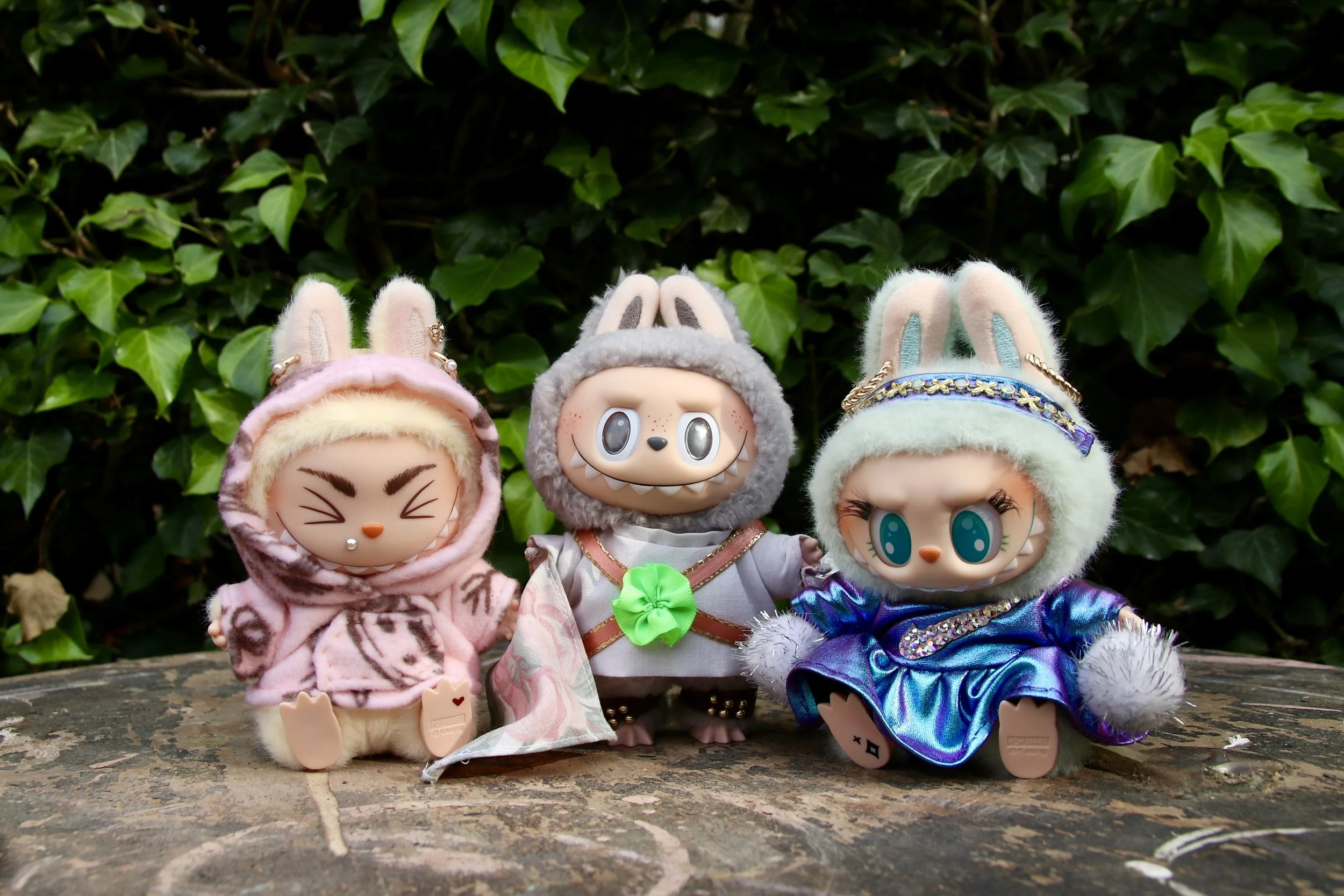
One thing about me is that I’m a sucker for a mass cultural trend. No really. I sometimes get the sense people think that us folk folx are immured—if not outright allergic—to that kind of thing.
Trappings of the modern world and all that, not to mention that a big ol’ chunk of the folk music scene, at least, long positioned itself as the antithesis of all things popular culture—which is kind of ironic because of course, folk songs and tunes were the popular music of their day (if they hadn’t been, they’d hardly have managed to survive for so long).
And there’s definitely still a fairly strong neophobic tendency in some quarters of the folk world. I don’t need to tap my sign again to tell you that the persistent association of ‘folk’ with ‘the past’ is inaccurate and limiting, but even so, and current resurgence notwithstanding, few people would routinely use folk and ‘fashionable’ in the same sentence. We’re quite *happy* with our hemp pool slides and nettle tampons thank you very much.
But I for one am a confirmed trendoid—if not across most areas of my life, then at least when it comes to a cute viral trinket. I can’t seem to help myself. As such what follows can only be described as a long-winded attempt to justify-by-intellectualisation my current obsession with the It-Toy of the moment, Popmart’s Labubu doll—pictured here in a variety of folkish guises I’ve knocked up over the past few weeks at my studio table. I’m going to do my best to tell you what I think Labubu, and other mega-trends like it, might be able to tell us about folk-lore and -life in 2025, why it’s not ONLY about fad-hopping and mindless overconsumption, but maybe a drive to find community and joy in a soul-destructing epoch, and a site for low-stakes creative participation, where the parameters are already reassuringly ordained…or something like that.
For those not in the know, Labubu—the gremlin-faced brainchild of Hong Kong illustrator and designer, Kasing Lung—is everywhere right now. Or rather, it’s nowhere, because the ugly-cute bag charms, packaged in mystery ‘blind boxes’ to create a heightened consumer experience (often likened to gambling) are currently sold out worldwide. First adopted by K-pop stars and other global celebs who were papped with them dangling from their designer purses, they’re now purchasable only via online raffle, or subject to wild inflation by resellers. There was even a brief hiatus on official sales in the UK back in May because literal fights were breaking out in the queues outside the Popmart stores—just to give you an idea of the strong passions these toys seem to provoke.
I need to say outright that all of that stuff…the false exclusivity, the avarice, the incitement to hyper-consumption, the environmental burden…all of that is gross. I’m not seeking to justify it and I get that I’m complicit in making this post. But at the same time, I also want to acknowledge that there has been a community around ‘designer / artist vinyl’ for YEARS, long before Labubu came onto the scene in 2019 and then popped *off*—and it was comparatively small, niche and underground. I was a HUGE fan of Pete Fowler’s Monsterism Island figures for Kid Robot back in the pre-2010s, and also owned a couple of Heidi Kenney’s original—and at the time *handmade*—Yummy World food plushes. It was an accessible way of buying art; small runs, cool-as-fk indie creators, shadowy geek shops in godforsaken parts of the high street. As a lonely, anxious, frustrated (non-)artist desperate for connection and a place in the world,, I ate that stuff UP.
What’s different with Labubu, in spite of its scarcity status, is its gigantic mainstream appeal. So popular, in fact, that it has spawned a whole slew of knock-offs—colloquially known as ‘Lafufus’, on sale at a Vape Shop or ‘phone case kiosk near you—absorbing a little of the deficit in authentic models available for purchase. I’ve also seen numerous Youtube video tutorials advising on how to *make your own* Labubu at home, using hot glue and air dry clay, towelling face cloths and gel nail polish and this being the era of Tiktok and Aliexpress, there’s also a BIG trend for Labubu and Lafufu *customisation*, as I’ve done here.
Meet Jingy, sporting a handmade Cotswold morris dance kit, complete with seed-bead bells and hankies crafted from an old bedsheet. And Sam-Sam, my fluffy / carnival morris dancing Labubu, decked out in holographic lycra and fake Swarovski’s, carrying two pom-poms as shakers and loosely inspired by my lovely friends at Orcadia Morris Dancers. And finally, there’s PJ, rocking a miniature pink fleece hoodie, made from offcuts from my rushcart costumes the other week. She has multiple piercings, a hand-painted scouse brow, and is awaiting delivery of a teeny bottle of lager from a dolls’ house stockist I found on Etsy, to complete the pyjama-supermarket trip vibe. They are my children, and I would die for them.
It’s also fair to say that it’s this quality of customisability that really gets me excited about a trend like Labubu…the possibility to transform a basic, mass-produced item into something unique and personal (or even to create it from scratch), like the MUNNYs and DUNNYs I used to drool over as a kid; blank vinyl figures meant for painting and modding to their creator’s preference. There were whole websites dedicated to sharing tips and material choices, as well as galleries of inspiration, populated by some insanely talented artists.Today it’s endless reels and ‘For You’ recommendations on my Instagram, showing the different ways that people are choosing to express themselves through the medium of Labubu.
But what does this have to do with folk? Lung cites childhood readings of Nordic folklore and mythology—particularly tales about mischievous elves and forest spirits—as key influences in his creation of the Labubu character.
But perhaps more than that, there’s a long and important history of folk interaction with mass-produced culture. As well as the items made by hand by ‘unskilled’ and amateur craftspeople, many of Barbara Jones’s ‘unsophisticated’ arts, documented in the 1940s, represented things made ‘outside the village on a wholesale scale’, such as toy theatres, shop signs, waxworks and fireworks, while Margaret Lambert and Enid Marx famously argued that folk art revealed the creative preferences of ordinary people in their everyday lives, including the popular tastes ‘impos[ed]…on the product of the craftsmen or of the machine’. Labubu as a commodity of widespread appeal might be said then to speak to the accumulated desires of a global folk audience, while the widespread variants and counterfeit versions of the doll demonstrates the still-fertile interplay between high and low art, between the professionalised and commodified art and retail space and the practices of home crafters and industrial imitators. Which came first, the chicken or the egg?
There’s also the irrepressible role of social media as a site of transmission for traditions—however fleetingly embodied—on a scale and tempo never previously experienced. Customising Labubu dolls and sharing the results online is a way of finding and sharing community, a way of building on the creativity of others and making something your own. I’ve not yet fully unpicked the etymological relation between ‘custom’ and ‘customisation’ but both are performative acts that might help us feel part of something beyond our immediate conditions—even if that is merely the recognition that we are one of many also experiencing a small moment of joy in an otherwise bleak and fearful time.
Or maybe they’re just super-cute. I dunno.
—July 2025
